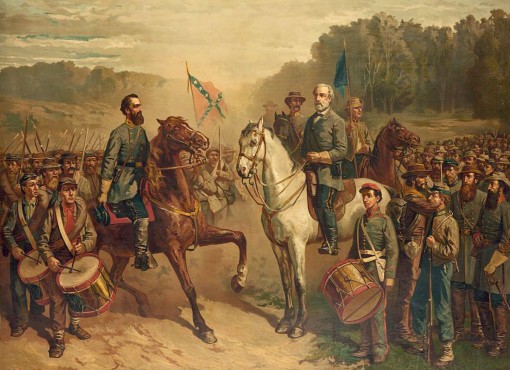
Lithograph by J.G. Fay (1877)
Traveller, the war-horse of Robert E. Lee, and Little Sorrel, Stonewall Jackson’s horse, were nearly as recognizable during the Civil War as their owners. Still held in reverence long after the war, both horses’ remains were preserved following their own deaths and placed on display for an admiring public. Their skeletal remains are now fittingly buried in Lexington, Virginia, not far from the graves of their famous owners.
Traveller
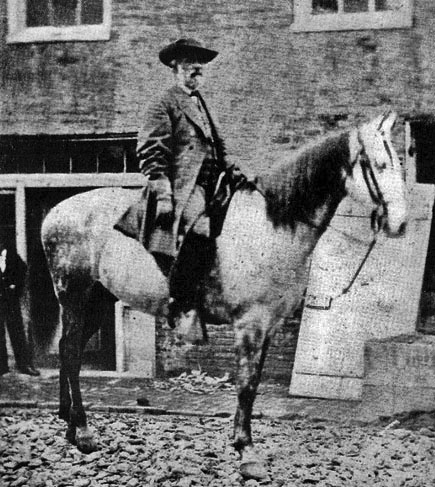
The gray Saddlebred horse that would become known as “Traveller” was born near Blue Sulphur Springs, (West) Virginia in 1857 and originally named “Jeff Davis.” His wartime owner, Thomas L. Broun, a major in the Third Regiment of the Wise Legion, recalled the sixteen-hand horse being “greatly admired in camp for his rapid and springy walk, his high spirit, cold carriage, and muscular strength.” Robert E. Lee’s initial encounter with the horse occurred in the fall of 1861. Having arrived in western Virginia to assume command of Confederate forces in the area, Lee first saw and admired the four-year-old horse but was unable to acquire it at the time. Then in February 1862, Lee happened upon the horse again in South Carolina and persuaded the owner to sell him the animal for $200 in Confederate currency.
Lee eventually changed the horse’s name to Traveller (spelled with a double “l” in English style) and famously rode him throughout the remainder of the Civil War.
Following the war in 1865, horse and owner relocated to Lexington, Virginia, when Lee accepted the presidency of the then Washington College. Lee even arranged to have a large brick stable built behind the President’s House for Traveller in 1869.
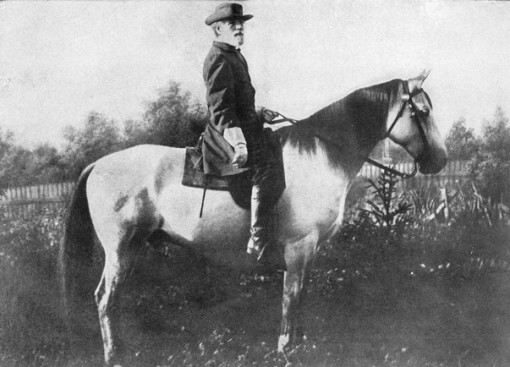
After General’s Lee’s death in 1870, Traveller remained at the college, being allowed to graze the campus grounds. In June 1871, while Lee’s daughter was feeding Traveller a lump of sugar, the horse was found to be lame. A close examination revealed a “small nail or tack” in the animal’s hoof, which was removed without incident. A few days later, however, Traveller became ill with tetanus and had to be euthanized. He was buried beneath a tree on the college grounds.
Traveller’s bones were exhumed at some point in 1875, bleached, and placed on exhibit for several years in New York. In 1907, the skeleton was mounted and returned to Washington and Lee University, where it remained on display until 1929. The bones were then relocated to the basement of Lee Chapel and finally reinterred outside the chapel near the entrance to the Lee family crypt in 1971, one hundred years after the horse’s death.
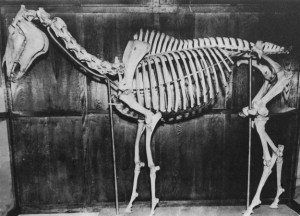

Little Sorrel
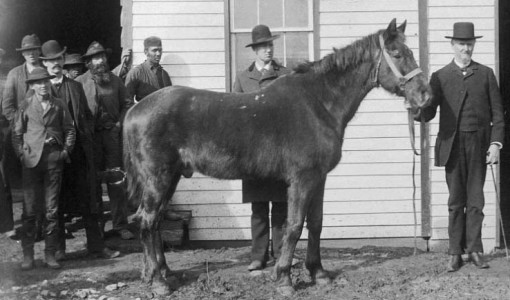
“Little Sorrel” was a Morgan horse, fifteen hands tall, captured in Harper’s Ferry, (West) Virginia by Stonewall Jackson’s army in 1861. Originally intending to give the horse to his wife, Jackson paid the quartermaster $150 for the gelding, naming him “Fancy.” But after riding the horse, Jackson found the animal’s gait so pleasing he remarked, “A seat on him was like being rocked in a cradle.” Deciding to keep the horse for himself, it quickly became known as “Little Sorrel” once Jackson began using it as his regular mount.
Although not looking the part of the classic “war-horse,” Little Sorrel had the reputation of remaining calm in battle while also possessing remarkable stamina on long marches. “The endurance of the little animal was marvelous,” Henry Kyd Douglas wrote, “and the General was apt to forget it was exceptional.”
Jackson was riding Little Sorrel when wounded on May 2, 1863 at the battle of Chancellorsville. The horse remained on the battlefield after Jackson was removed to receive medical attention and was later found by two artillery soldiers, neither of whom recognized it as Jackson’s horse. One of the soldiers rode the horse for several days until it was discovered to be Little Sorrel, at which point the horse was turned over the Gen. J.E.B Stuart. He in turn gave the animal to Anna Jackson, who took Little Sorrel with her to North Carolina to live at her father’s farm.
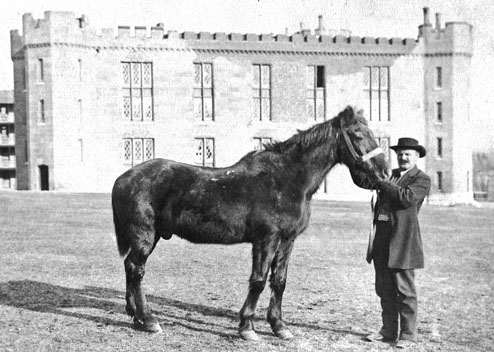
In 1883, Anna donated Little Sorrel to the Virginia Military Institute (VMI), where the animal was permitted to leisurely graze the parade grounds for the next two years. The horse was then relocated to the Confederate Soldiers’ Home in Richmond, Virginia, where he subsequently died at the age of 36 in 1886.
Following the animal’s death, the Soldiers’ Home contracted a taxidermist named Frederic Webster to preserve Little Sorrel’s remains. Webster mounted the hide on a framework of plaster, keeping the animal’s skeleton for himself “as part payment for my service.” In 1949, the hide was returned to VMI where it remains on display to this day. That same year, the horse’s skeletal remains were also donated to VMI, but stayed in storage until 1997, at which time they were cremated and interred on the school’s parade grounds at the foot of the Stonewall Jackson statue.
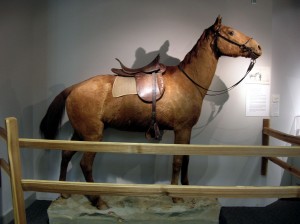
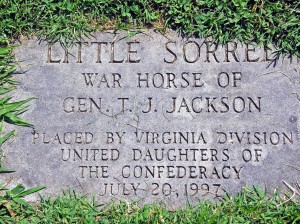
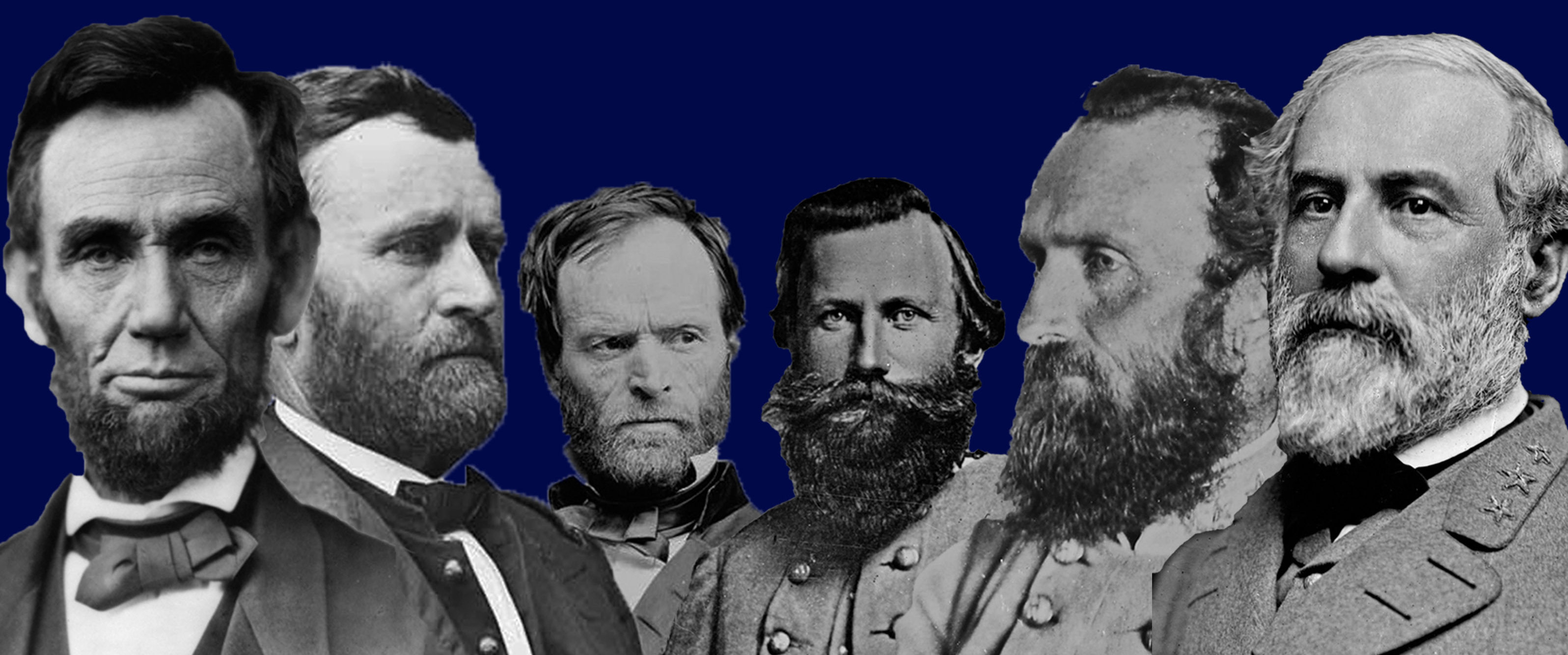
It was interesting to read that Traveller was from Blue Sulpher Springs, Greenbrier County, WV and General Lee purchased him in South Carolina. Local legend has always held that Traveller was born and then sold to Lee on Gauley Mountain in Fayette County, WV. Hence the nickname of Gauley Bridge High School being the Travellers.
I read some years ago that Lee saw him the first time on Sewell Mountain but did not actually take ownership of him until later in North Carolina. His owner wished to give him to Lee but Lee refused the offer and insisted on paying for him. I do not remember what the amount was said to be. I found this information years ago and don’t remember the exact details. More research may bring further info to light.
As mentioned in the post, Lee first encountered the horse around Big Swell Mountain in (West) Virginia. He then re-encountered the horse in South Carolina where he bought him for $200.
Yes, Rienzi, General Sheridan’s Morgan war horse had competition – from a 14.3 Morgan chestnut named Fancy, aka Little Sorrel, a captured Union Morgan horse that was repurposed as a Confederate war horse. Fancy was the personal wartime mount of CSA General Thomas J. “Stonewall” Jackson, (Jan 21, 1824 – May 10, 1863), Brigade and later Corps commander. Jackson was an instructor at the Virginia Military Institute (VMI) prior to the War. Fancy was one of two horses Jackson acquired off of a captured Union livestock train at Harper’s Ferry, Va. May 9, 1861. Fancy was the smaller (14.3) of the two and was targeted to become his wife’s (Mary Anna) horse. Fancy was foaled approximately 1850 on the Noah C. Collins farm in Somers, Connecticut and of Morgan descent and purchased by the US Government in the spring of 1861 for war stock. Jackson soon realized the big chestnut stallion was not battle-worthy. Jackson found Fancy to be very easy gaited, strong constitution, easily sustainable in the field and possessed the necessary stamina, endurance and resiliency to persevere the rigors of campaign. Jackson was not an expert horseman but Fancy, or Little Sorrel, took care of his master. Mary Anna Jackson in her “Life and Letters of Stonewall Jackson,” noted, “The horse’s chunky lines were made awkward by an unusually large neck and an undistinguished head. His eyes were his chief beauty, being most intelligent and expressive and as soft as a gazelle’s.” Jackson’s staff officer Kyd Douglas noted that he never observed a sign of fatigue in Little Sorrel. The horse suffered all the privations and stress of war with his master. Jackson found Fancy cool under fire in the heat of battle and blessed with a gait that was as soft as the rocking of a cradle. Jackson rode Fancy into the battles of Manassas, Seven Days, Fredericksburg, Chancellorsville. Jackson was mortally wounded and died on May 10, 1863. Fancy survived the tragedy and was returned home to Mary Anna who kept him at Virginia Governor John Letcher’s stable in 1863. Mary’s finances forcer her to transfer Fancy to VMI after which he was transferred to the Old Soldier’s home in Richmond, Va. Fancy became an Southern icon and made many appearances. Most likely his last appearance was at the Exposition in New Orleans, La. in 1885 for he died a year later at the age of 36 and was mounted for display, being only one of two from the CW. His skeleton was returned to VMI in 1947 and in 1997 was cremated and buried there at the base of Jackson’s statue. For sure, Jackson could not have acquired a better warhorse – an amazing example of the Morgan breed at its best.
I am trying to find out information on Ajax. Where he came from and where is Ajax buried. I would also like a picture of Ajax and was Ajax ridden at the battle of Cumberland Church. I would also like a picture of Ajax breast plate. Thanks for any information anyone might have.
My grandfather, a blacksmith in Lexington, VA was rumored to have taken care of Traveller after Lee moved to Lecington. I would like to confirm this, so if anyone has information relative to this, please contact me.
Manly Brown, Jr.
What about James Longstreet’s horse “Hero”? Why don’t we ever hear about him?
I know very little about Longstreet’s horse.
Great article. Enjoy learning more about our American warhorses.